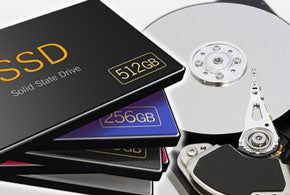Flash solutions offer a study in contrasts. The flash memory market is rife with opportunities but also complexity and challenges.
As flash solutions have taken the data center by storm, most IT organizations have taken a “flash-first” approach to data storage. Assuming the price is right and the workload they need to deploy can fit within the amount of capacity available on a flash storage system, the default option for primary storage these days is now some form of flash memory.
Flash Solutions: Obstacles Amid Opportunities
While selling flash storage these days is relatively straightforward, the challenge facing solution providers and their customers today is that there is no shortage of options spanning multiple types of solid-state drives (SSDs) and flash memory modules.
With the arrival of flash storage systems capable of holding 60TB per drive, the rate at which flash solutions are replacing traditional magnetic storage is only going to accelerate in the years ahead, especially once these devices can store as much as 100TB per SSD.
However, besides the order of magnitude in application performance provided by flash storage systems, the major benefits enabled by the shift to flash memory include a dramatic consolidation in the amount of physical space consumed in any given data center. That space reduction, in turn, reduces the number of square feet that needs to be acquired as well as the amount of power required for flash storage.
In addition, the need for expertise associated with optimizing I/O performance on spinning magnetic storage devices is eliminated. Instead of wasting massive amounts of storage capacity to make sure any given application has optimal access to where data is placed on a magnetic disk drive, all the data stored on a flash memory device is equally accessible.
Flash storage eliminates the need for the post-processing of data in a way that simplifies data management, explained Lee Caswell, vice president of products for the storage and availability unit of VMware. “Customer satisfaction winds up being higher while support costs are lower,” Caswell said.
Couple those ancillary benefits with dramatic improvements in application performance, and the shift to flash solutions is a no-brainer. A new report from Trendfocus finds that the enterprise SSD market will reach 4.068 million units for the second quarter of 2016, an increase of 10 percent quarter-over-quarter. In total, Trendfocus estimates that 4.16 exabytes of flash storage were shipped in the quarter.
Things start to get more complicated when trying figuring out where to optimally place flash storage based on the requirements of different types of application workloads.
The flash market and technology continue to evolve. Initially, flash storage showed up on servers. Applications and databases running on a single server benefited immensely from higher levels of direct-attached flash storage.
These days, flash memory is also made available on storage arrays. Depending on the application workload and the amount of available IT budget, flash storage manifests itself either as a layer of cache on top of traditional magnetic disk storage or in the form of an all-flash array. The benefit of an array is that flash storage becomes accessible to applications running across multiple servers.
To make those storage arrays even more appealing, it’s now possible to plug flash storage arrays into NVMe interfaces that provide the throughput needed to keep pace with flash storage technologies. Meanwhile, that same NVMe interface is also being used by vendors, such as Tegile Systems, to drive hyperconvergence into a traditional rack system in the data center.
“We’re able to scale out using up to eight controllers,” said Rob Commins, vice president of marketing for Tegile Systems. “We can get up to 6 petabytes of raw capacity.”
Flash Solution Delivery Options
One challenge flash solution providers face is that they need to figure out whether it’s better to deliver flash storage as an SSD or a module. An SSD essentially presents flash storage as a much faster disk drive to an application. A flash module dispenses with that legacy disk architecture to provide much higher levels of I/O performance.
For example, IBM uses flash modules to deliver an array for the midmarket priced below $1.50 per gigabyte. More recently, IBM unveiled an all-flash array aimed at hyperscale environments.
“We think the time for the all-flash data center is here,” said Alex Chen, director of storage systems and offering executive for file and object storage at IBM.

